Yes, today is all things Kerry. I visit Kerry house, drive the Ring of Kerry and explore The Kerry Bog Village
Kerry House is just a 5 minute walk from the Dromhall hotel. On the way I passed Johnny O’Leary, 1923 – 2004. He was an accomplished accordion player in the Sliabh Luachra (SHLEE-uv LOO-chra) tradition. It is a geographic style – contained in the mountainous region of Kerry. The music consists of dance polkas, jigs, reels. Johnny travelled the country promoting the music with a repertoire of 1500 songs.
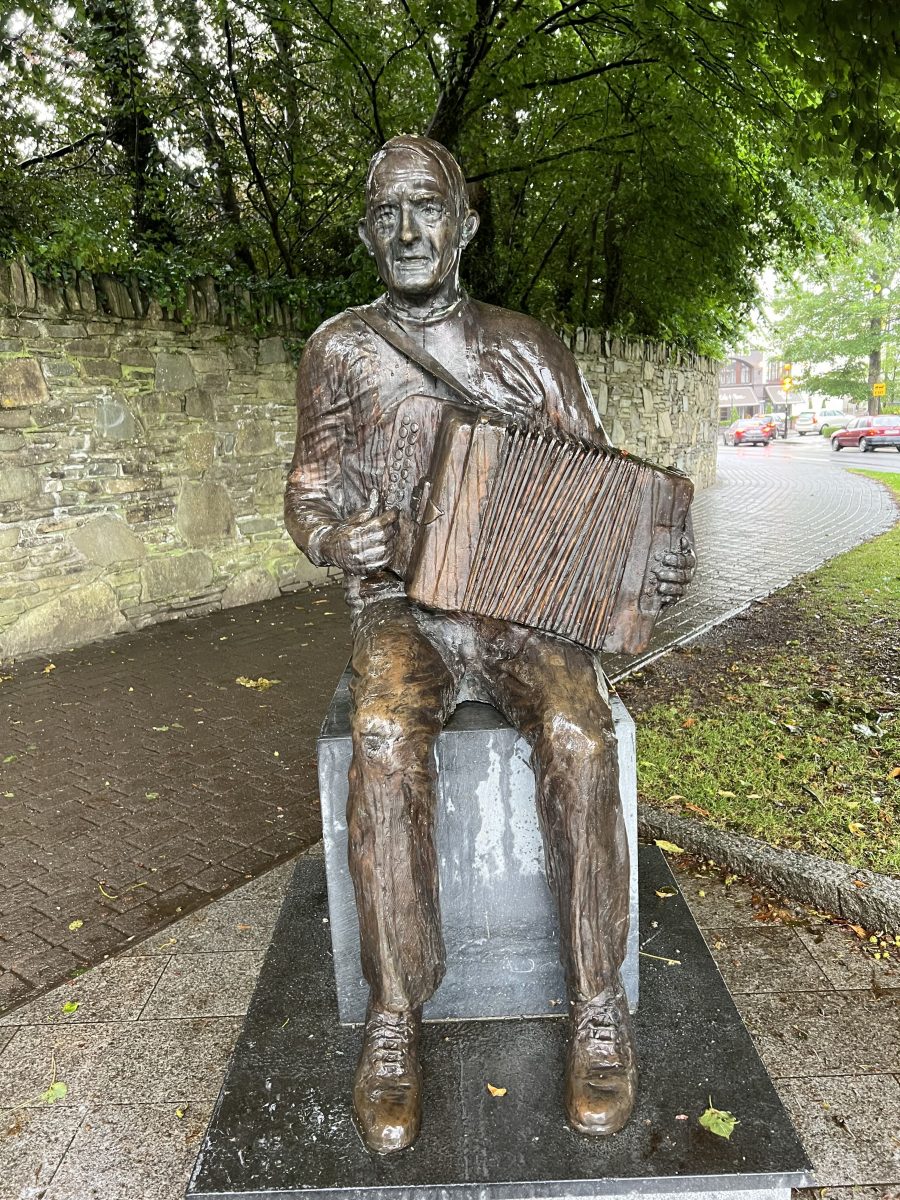
The entrance to Kerry house is through the Golden Gates. Kerry House and Gardens is part of Killarney National park.
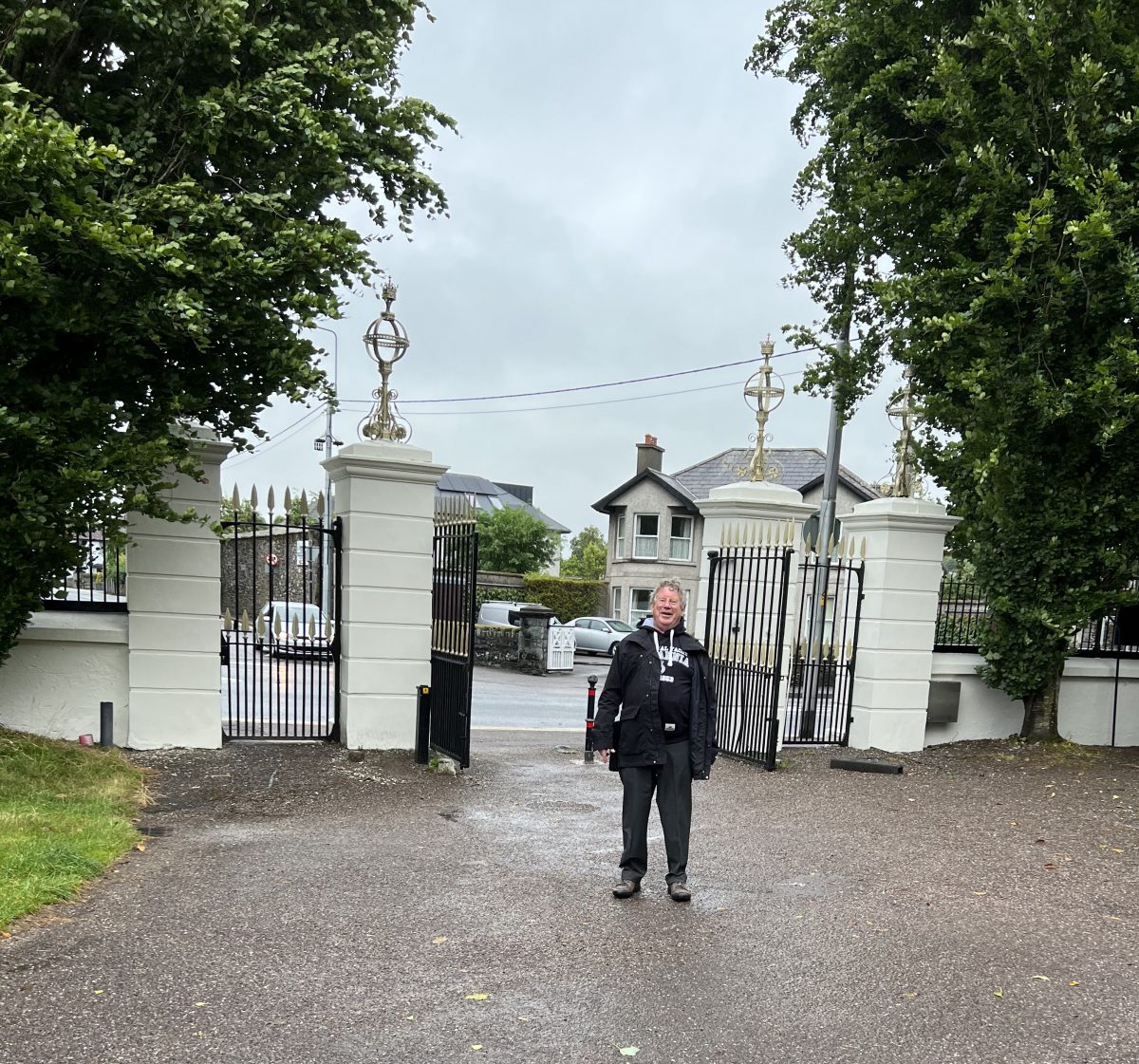
In fact, you could walk from Killarney House, through the park, all the way to Lough Leane.
Killarney National Park has the only native herd of Red Deer – 850. Red Deer are native to Ireland since the ice age. The male stag lives alone while the females herd in groups of 10 – 20
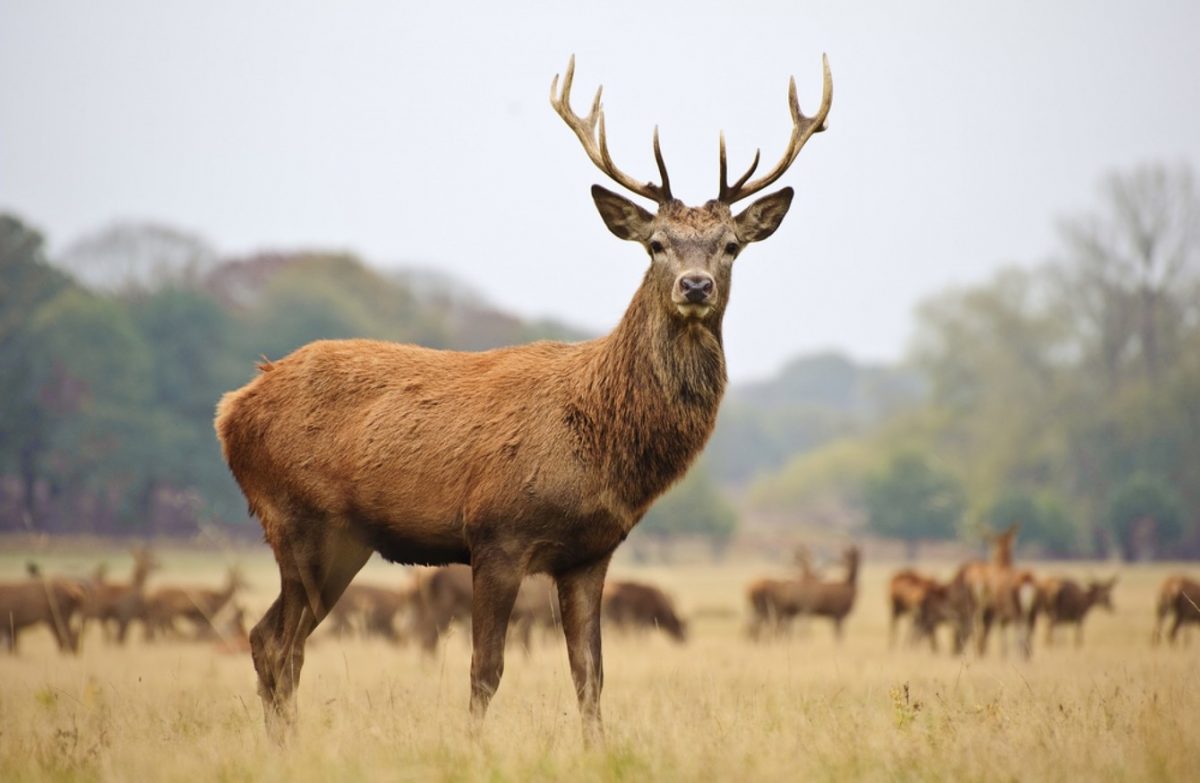
The house is open to visitors and has information on not only the house and gardens but the National Park as well. The house was originally the stable of the first Kenmare House – built in 1720
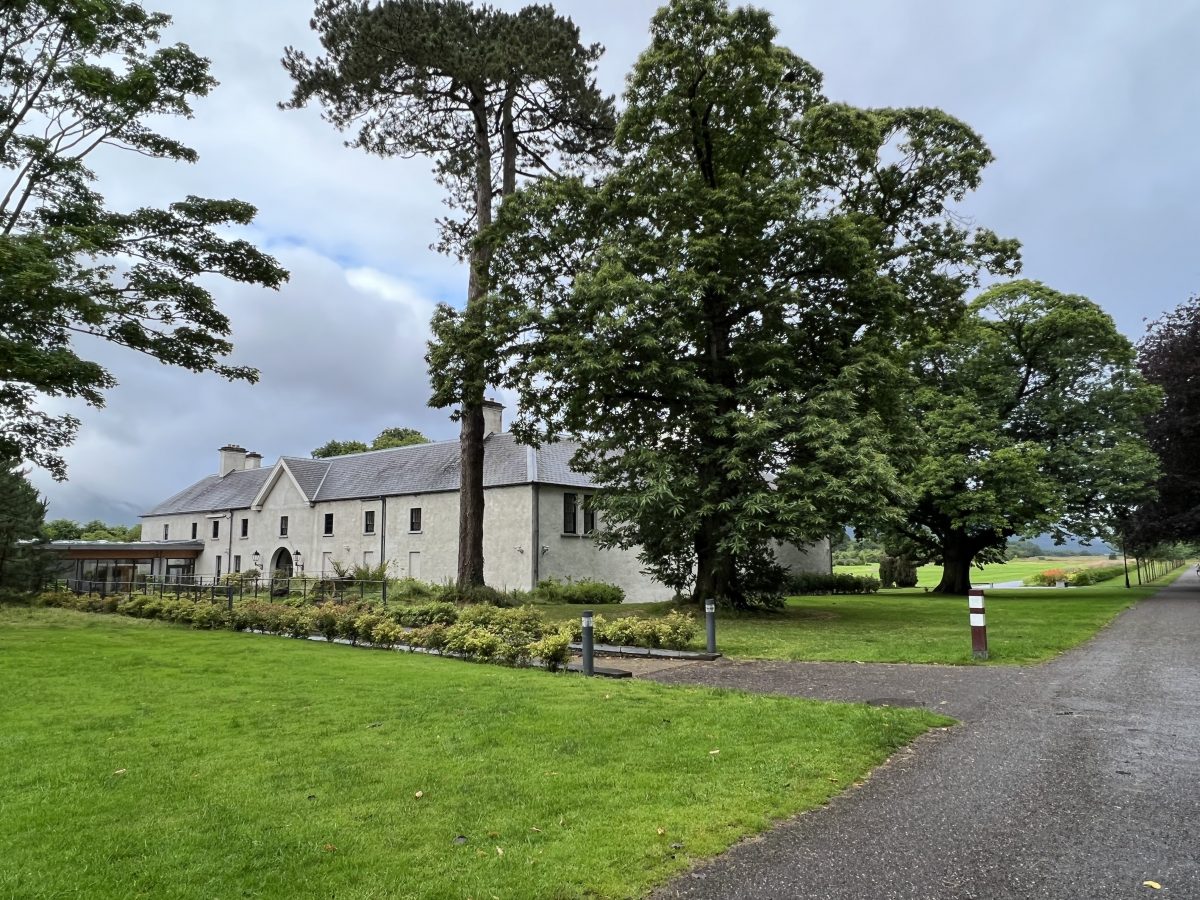
The first house was demolished after the completion of the Killarney House in 1881. That was burned down and the stable block was converted to accommodation
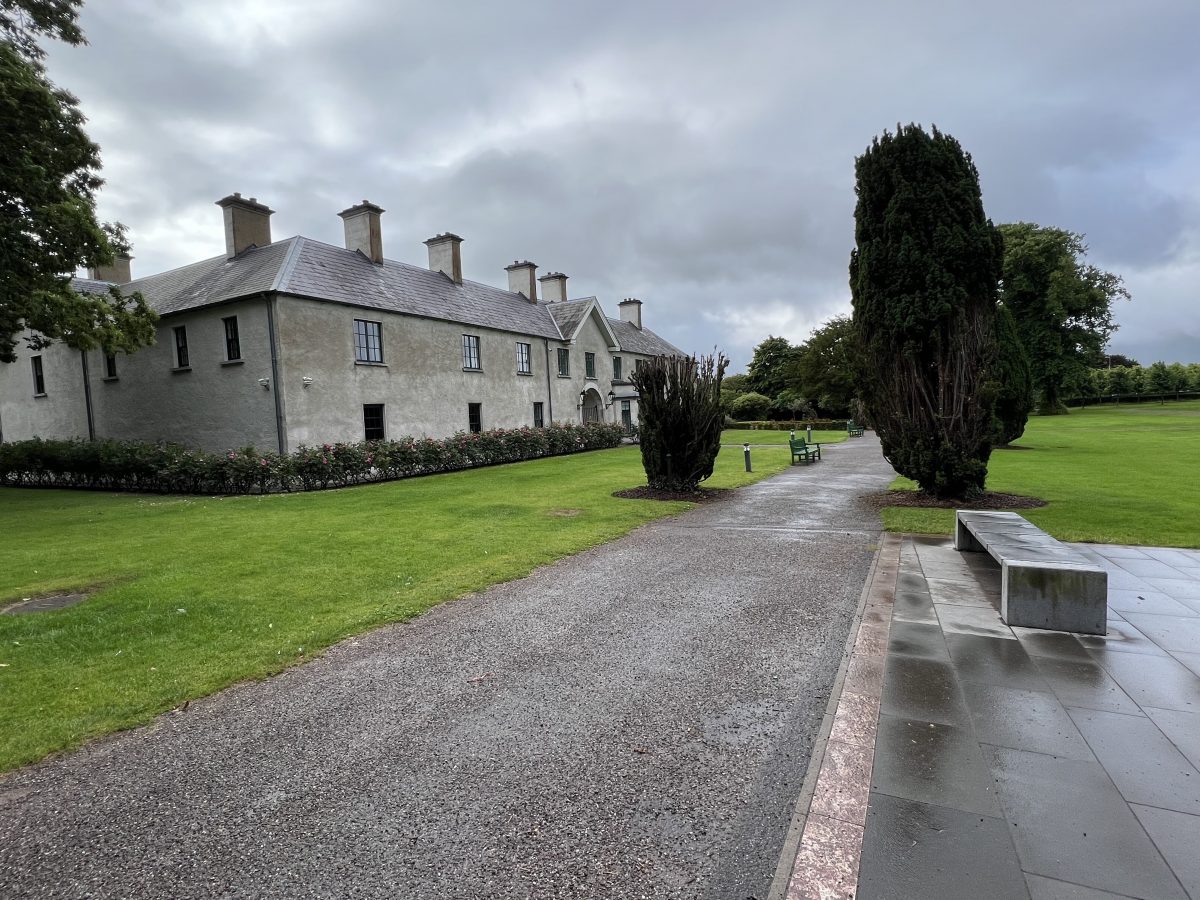
The houses were occupied by the Earls of Kenmare. It was the 5th Earl, Valentine Charles, that converted the stable block to accommodations.
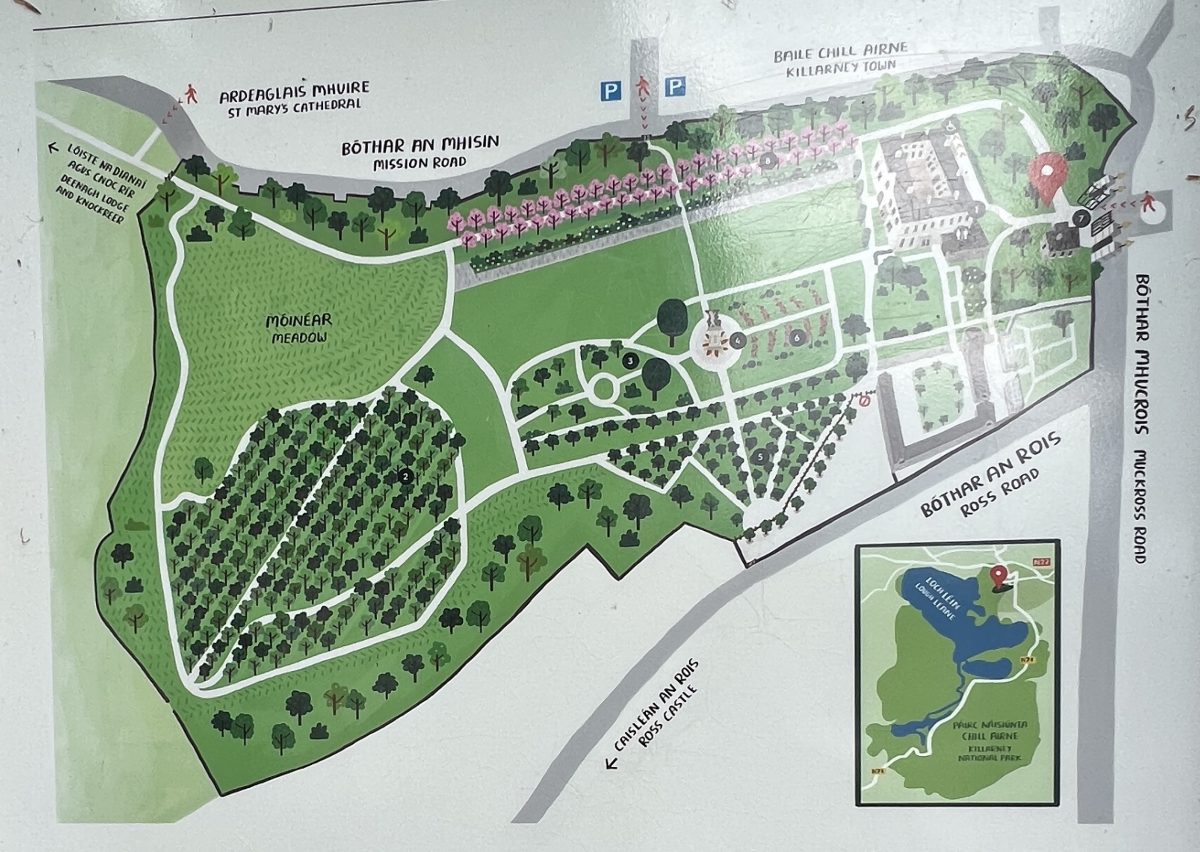
As you walk from the front of the house to the back, this magnificent view of the mountains and the Long Terrace greet you. In 1720, the estate was in disrepair. The 3rd Viscount raised the money to fix it up and make it profitable.
The original gardens were laid out in French formal style – the idea that man had control over nature. The view from the house to the lake was through a tree lined vista. The area next to the Long terrace, grass, may have been a canal at one time.
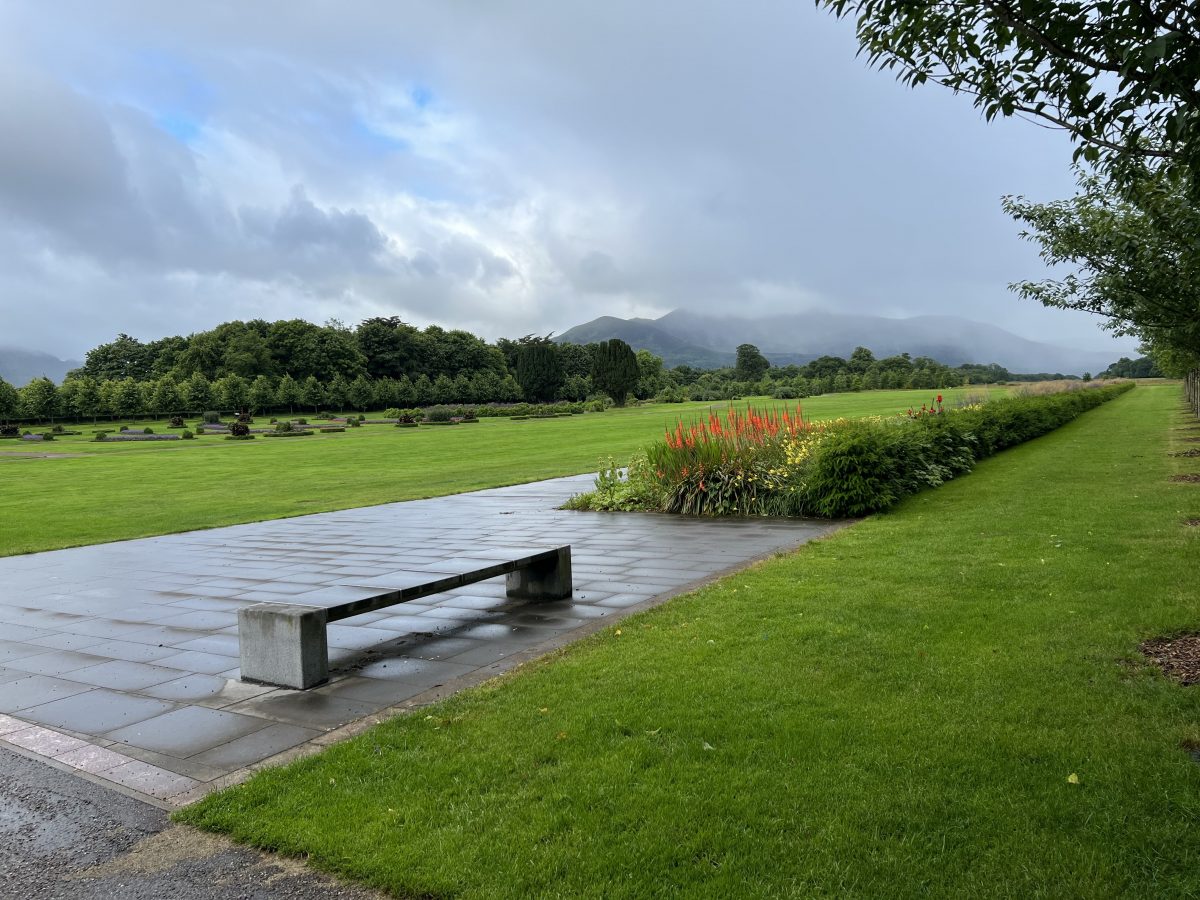
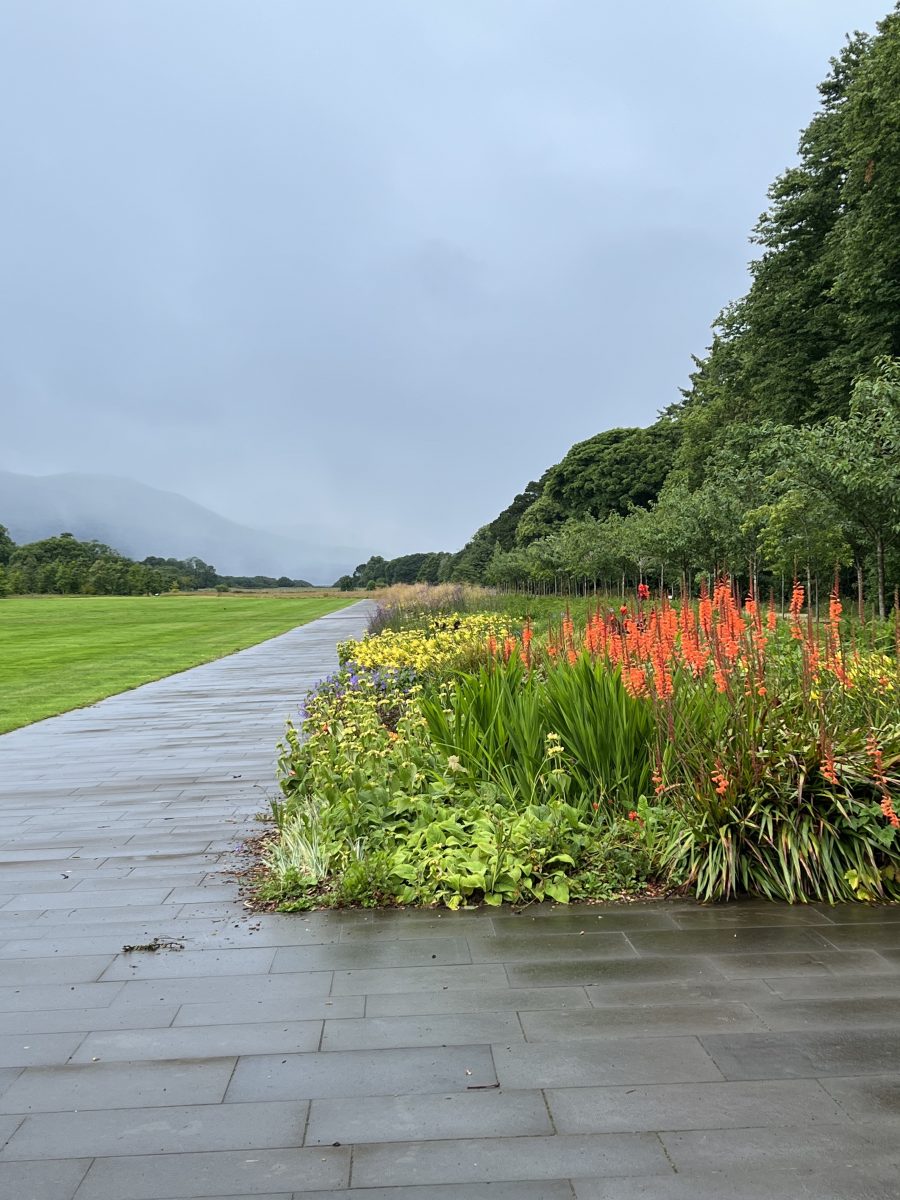
One of the aspects of the French style is the ‘patte d’oie’ – goose foot. It is 3 or 4 paths that radiate out from a central point. Traces of the goose foot have been found below the surface. The current garden has an example.
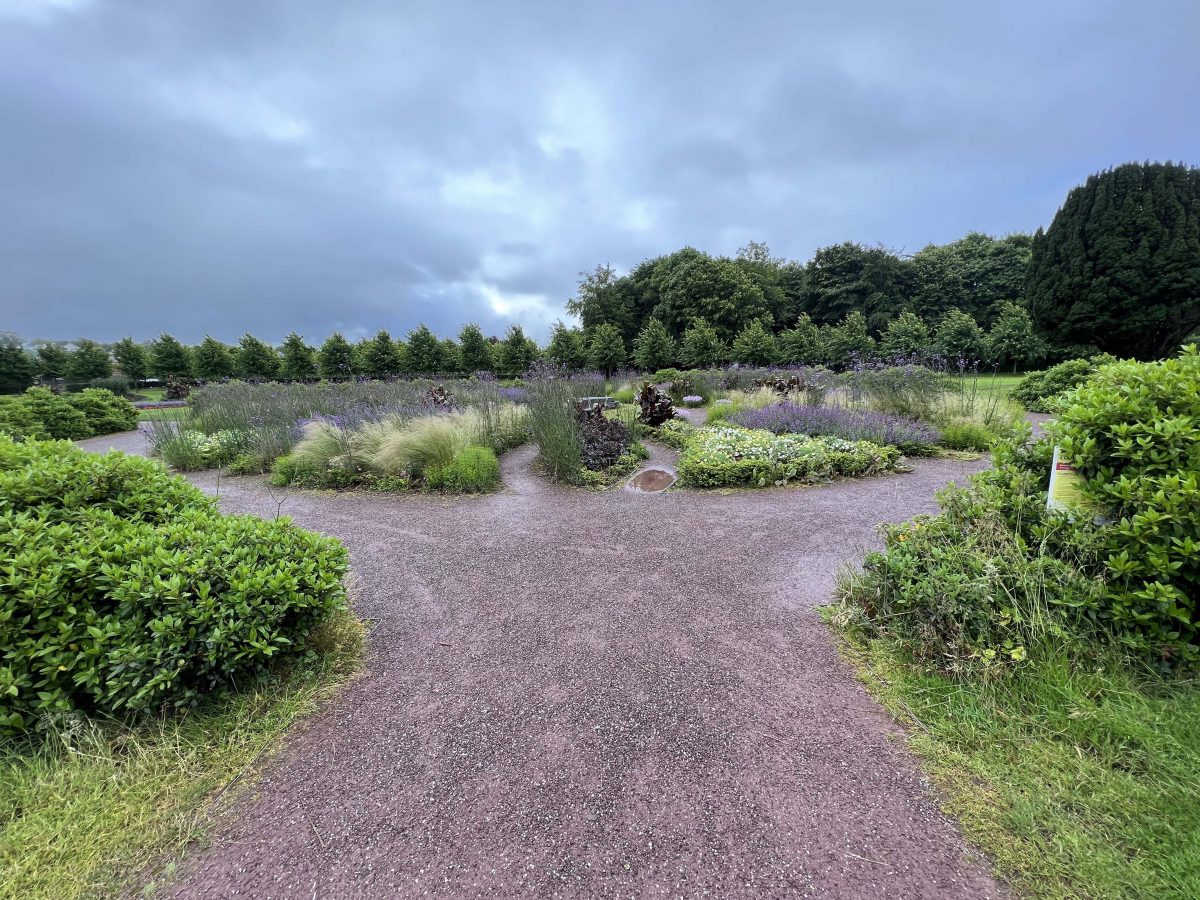
In 1861, Lady Gertrude Brown did much to restore the gardens in the Victorian style. This consisted of woody shrubs and flowers, interspersed with gravel paths.
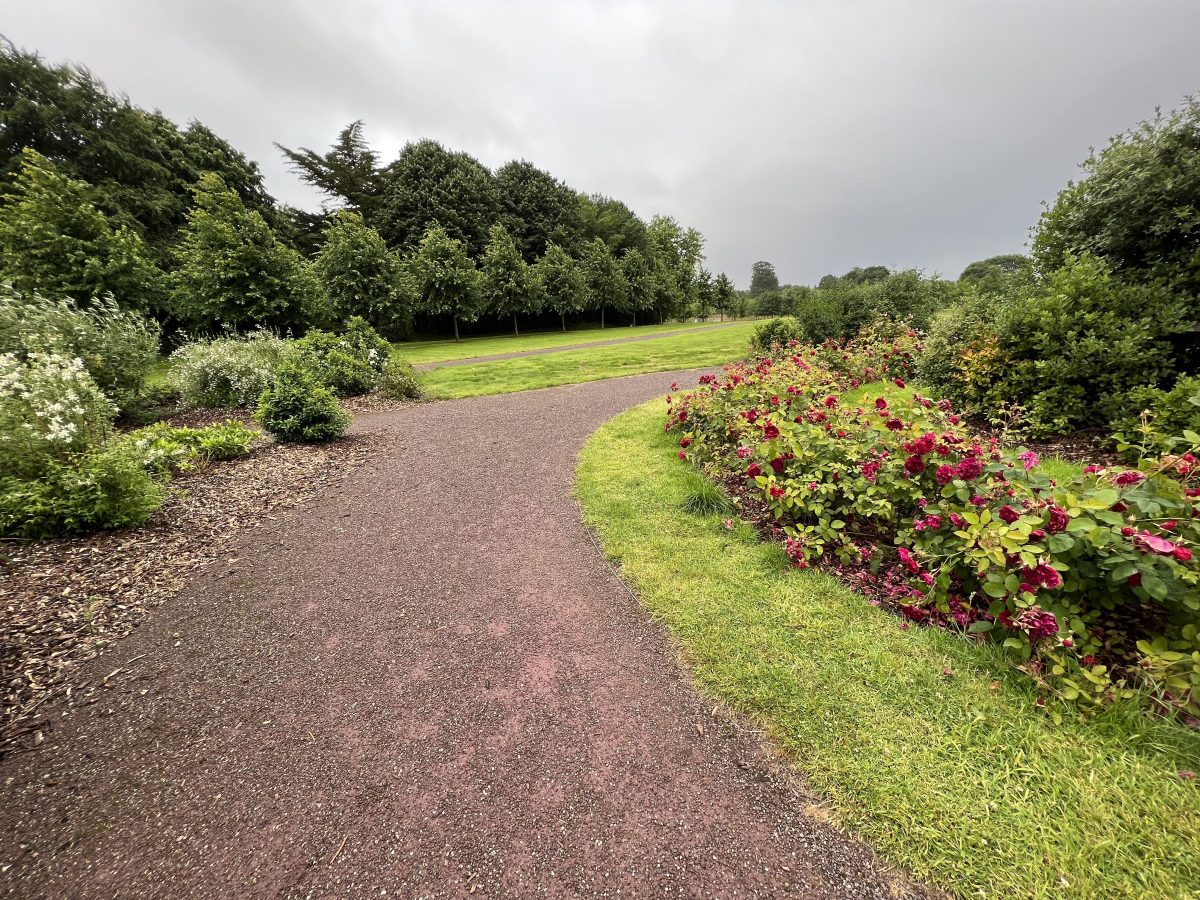
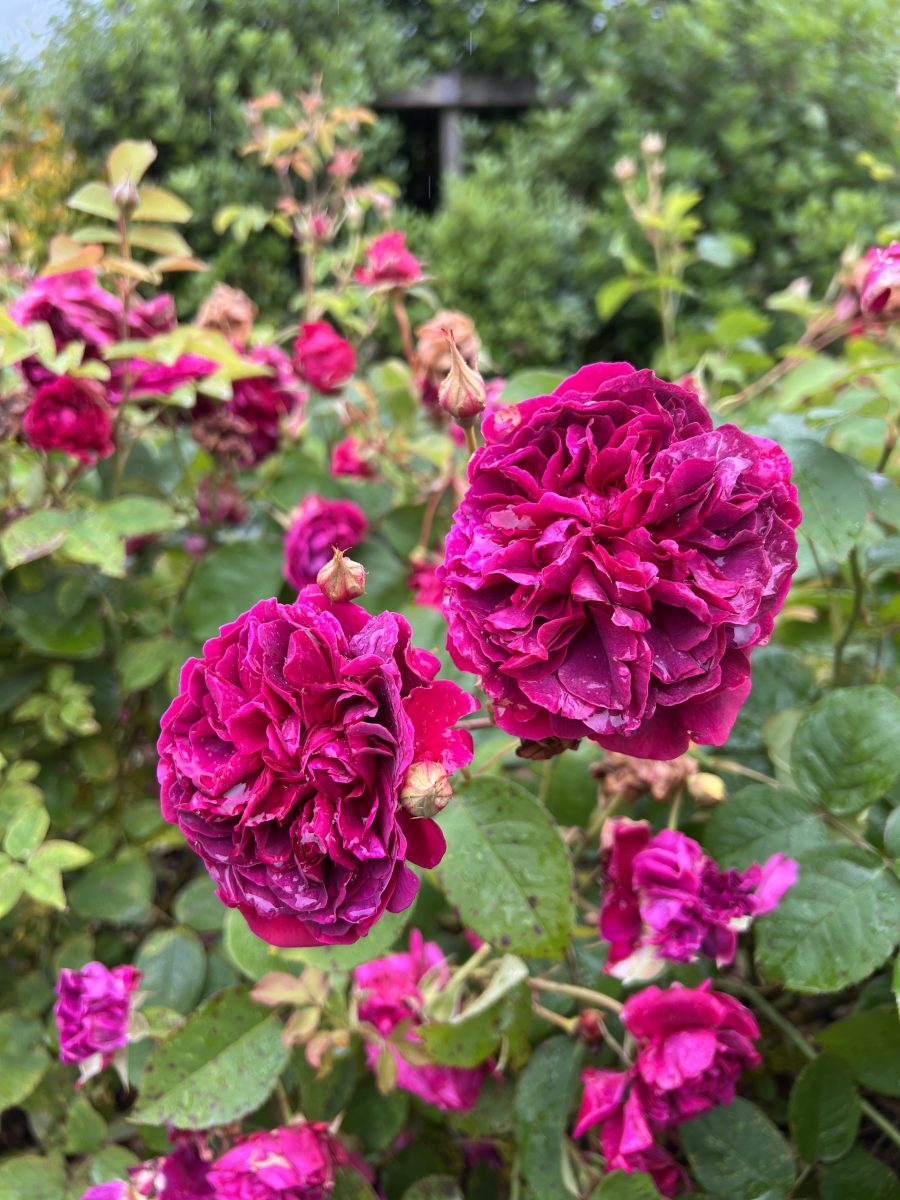
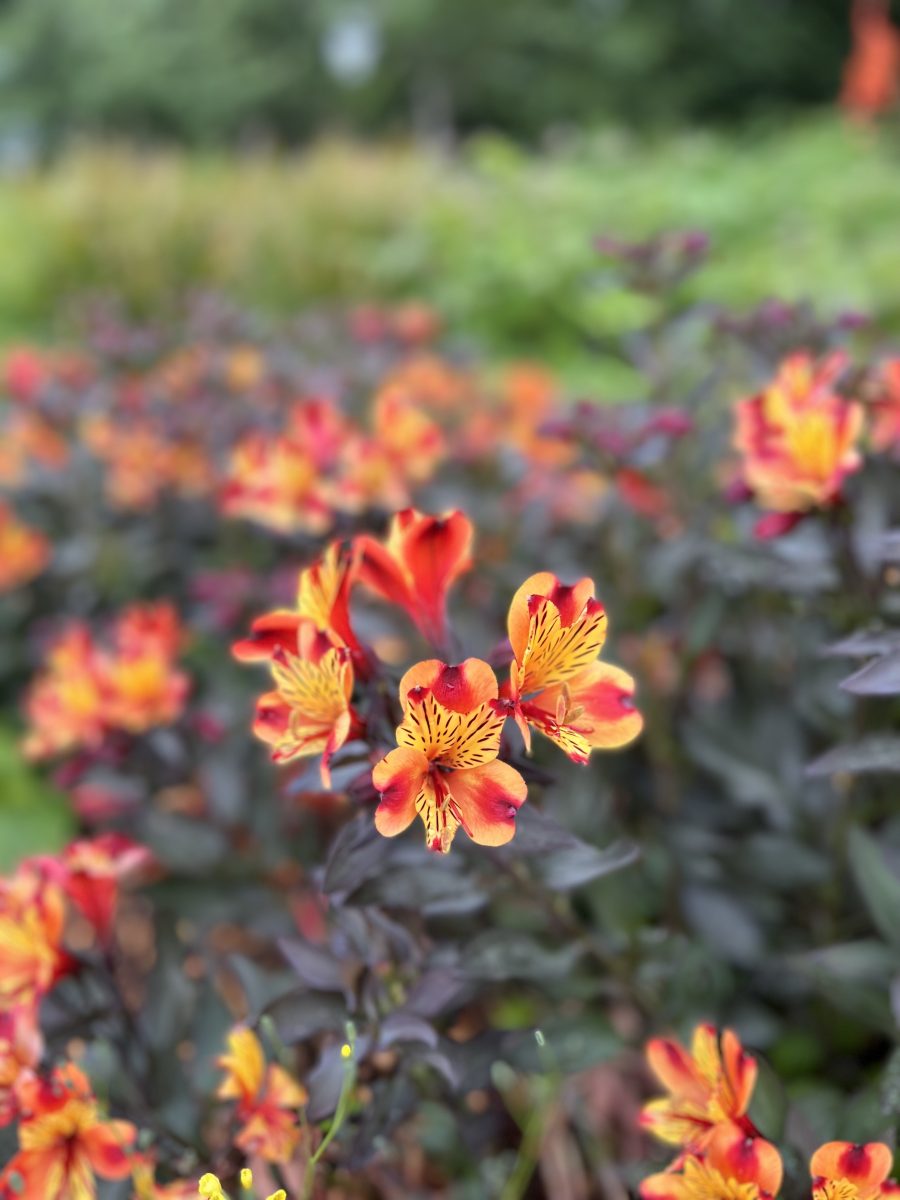
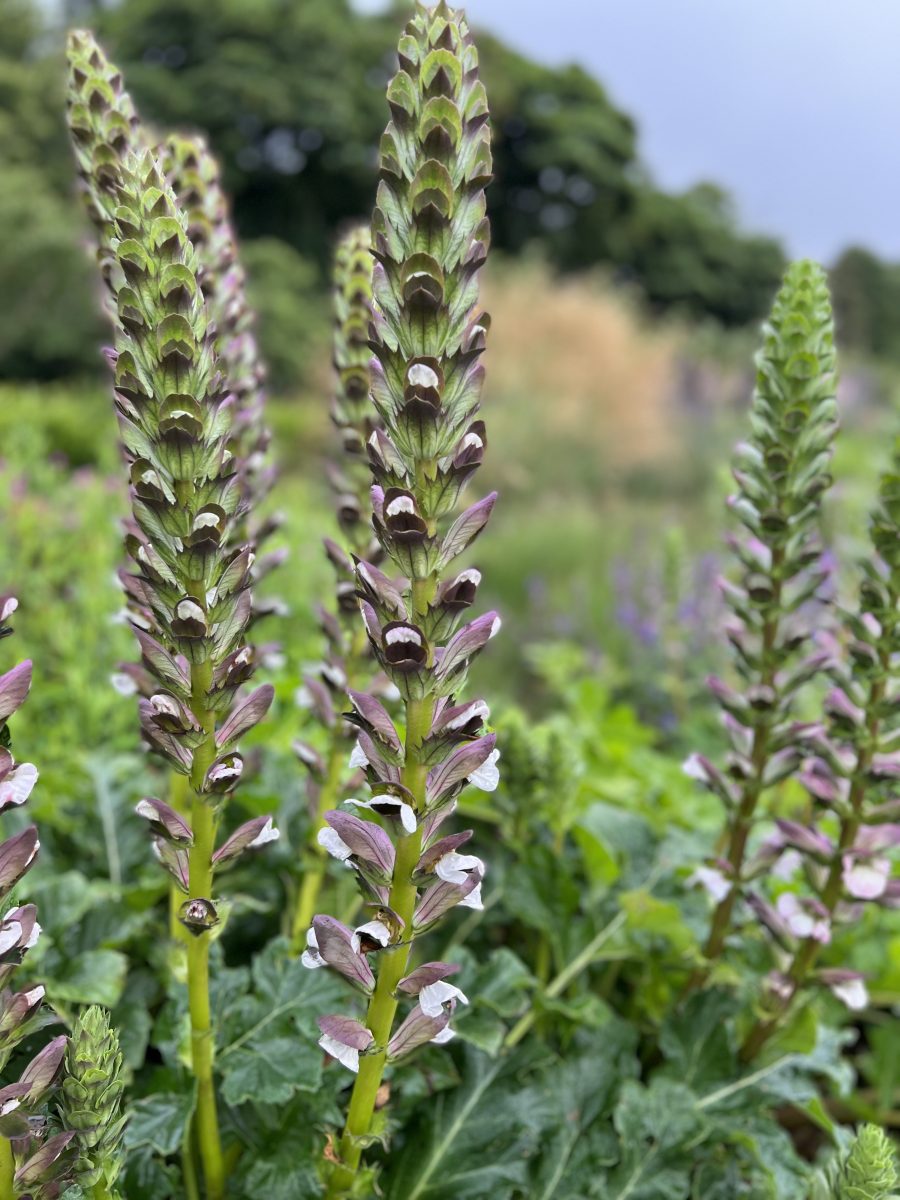
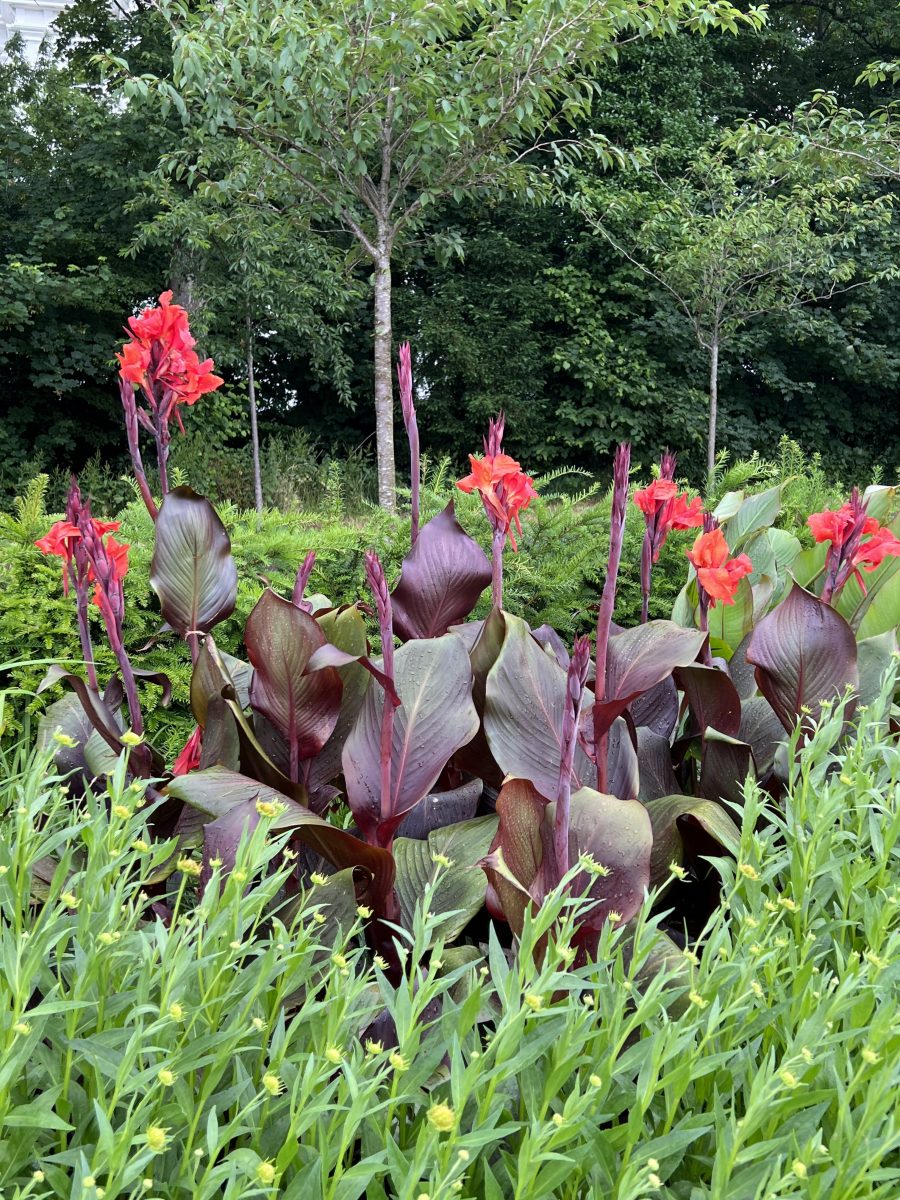
This made for an exhilarating morning walk. I could have spent the rest of the day – walking down to the lake. But I had to get back to catch the bus for the Ring of Kerry.
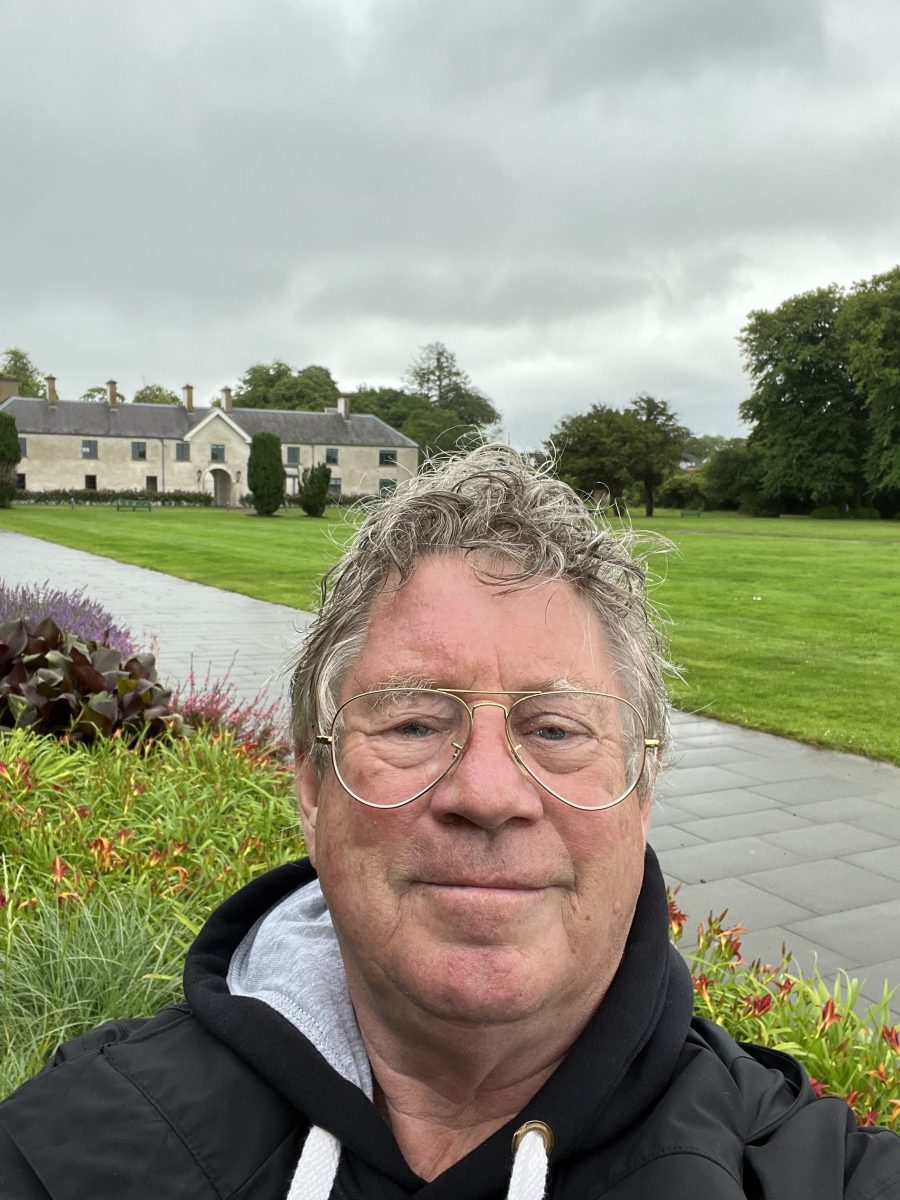
Our bus driver, Ian, explained our route. Because the roads were very narrow at points. the coach drivers all go in a counter-clockwise direction. Then the don’t run into each other coming from the opposite direction. Although, he said, there have been a number of drivers who didn’t get the memo and had to back up the road to let others get by.
The Ring of Kerry is one of the top drives in the world – up there with the Road to Hanna in Maui and the Cape Breton trail in Canada. The scenery is gorgeous, even with overcast clouds and rain.
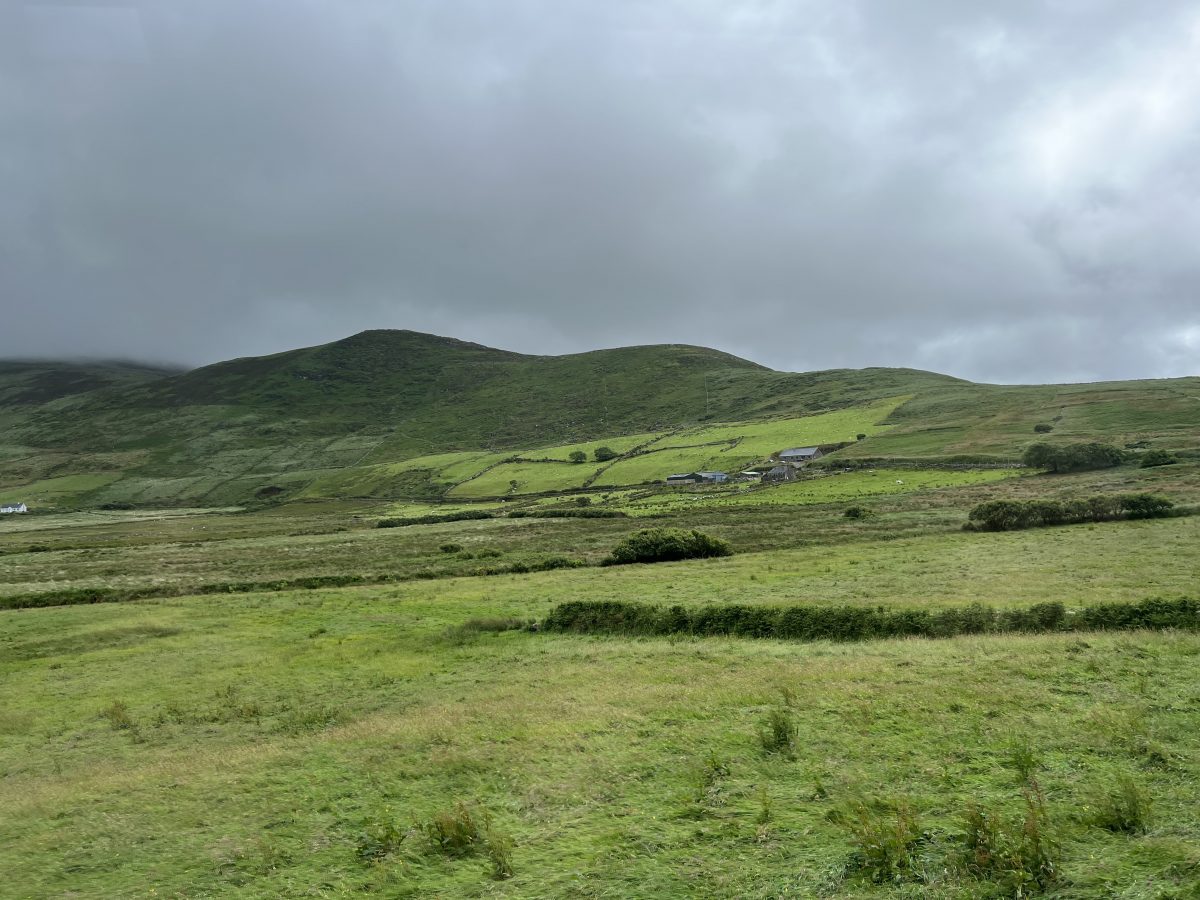
I first learned of the peat bog at the Clansmen Centre at Loch Ness. We travelled to the Kerry Bog Village where peat had the centre of attention. Well, almost the centre – the Irish Wolfhounds and bog ponies were adorable.
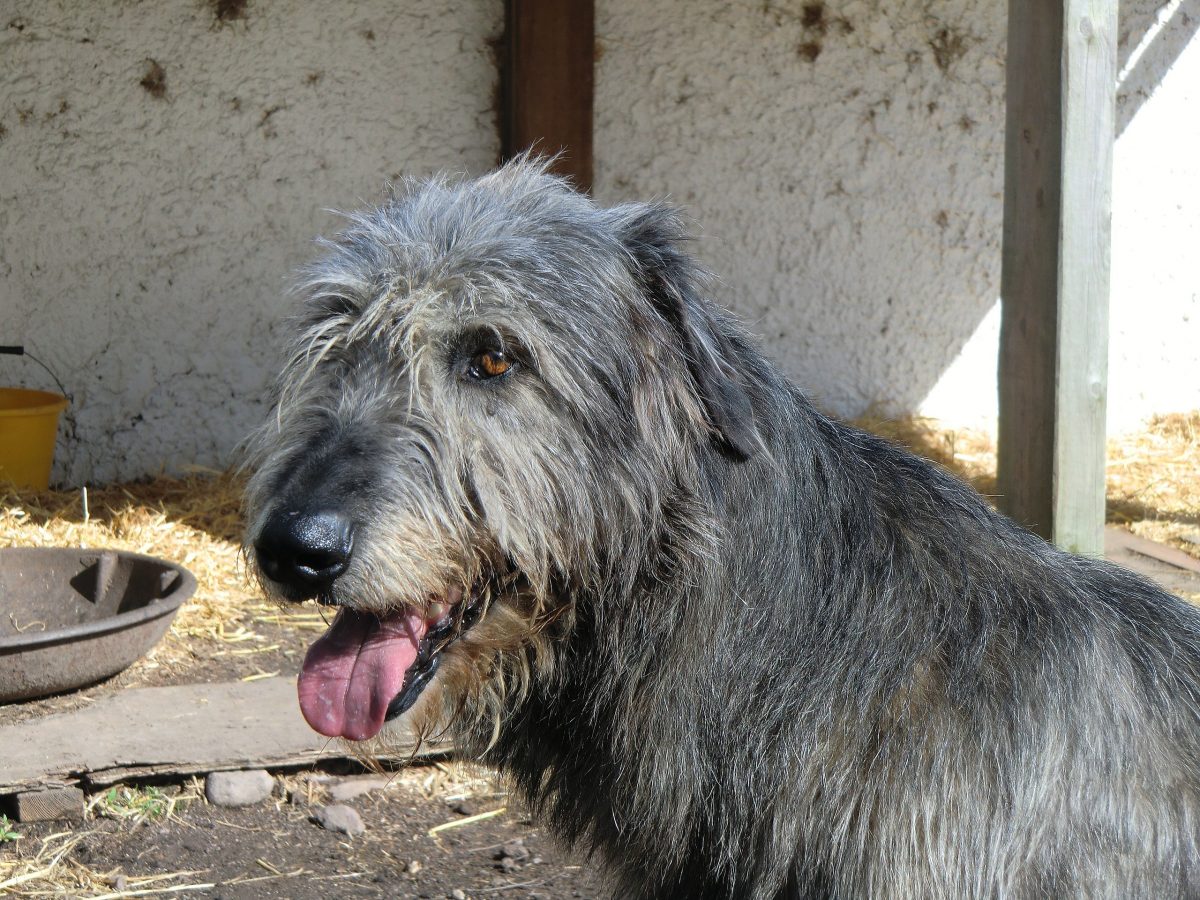
They breed the Irish Wolfhound at the village. It is famous for being the world’s tallest dog. The breed goes a long way back. In 391 AD, a Roman Consul bought 7 dogs to bring back to the Roman Coliseum. The breed was revived in the 19th century. They have a sweet temperament. This guy came up for a head pet.
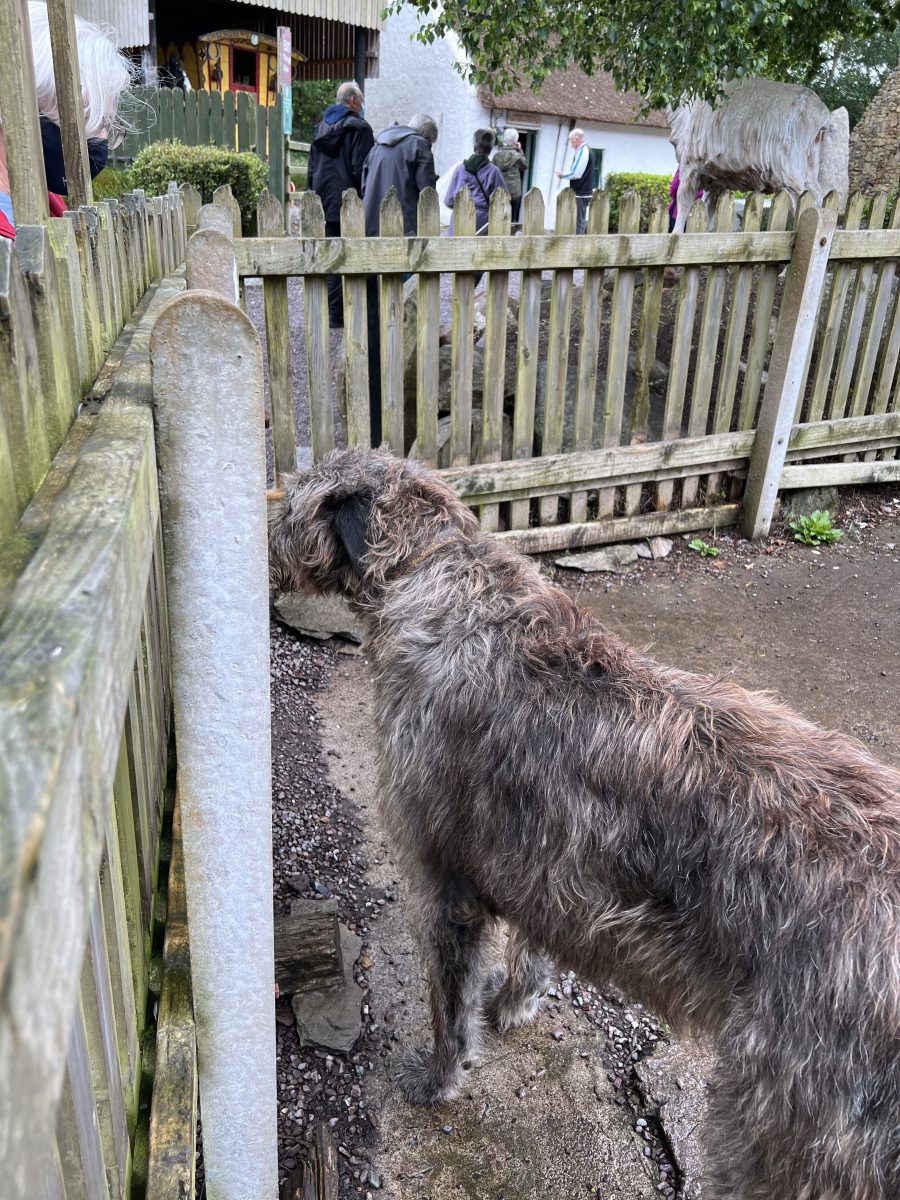
This fellow in the back is a champion but choose to ignore the tourists.
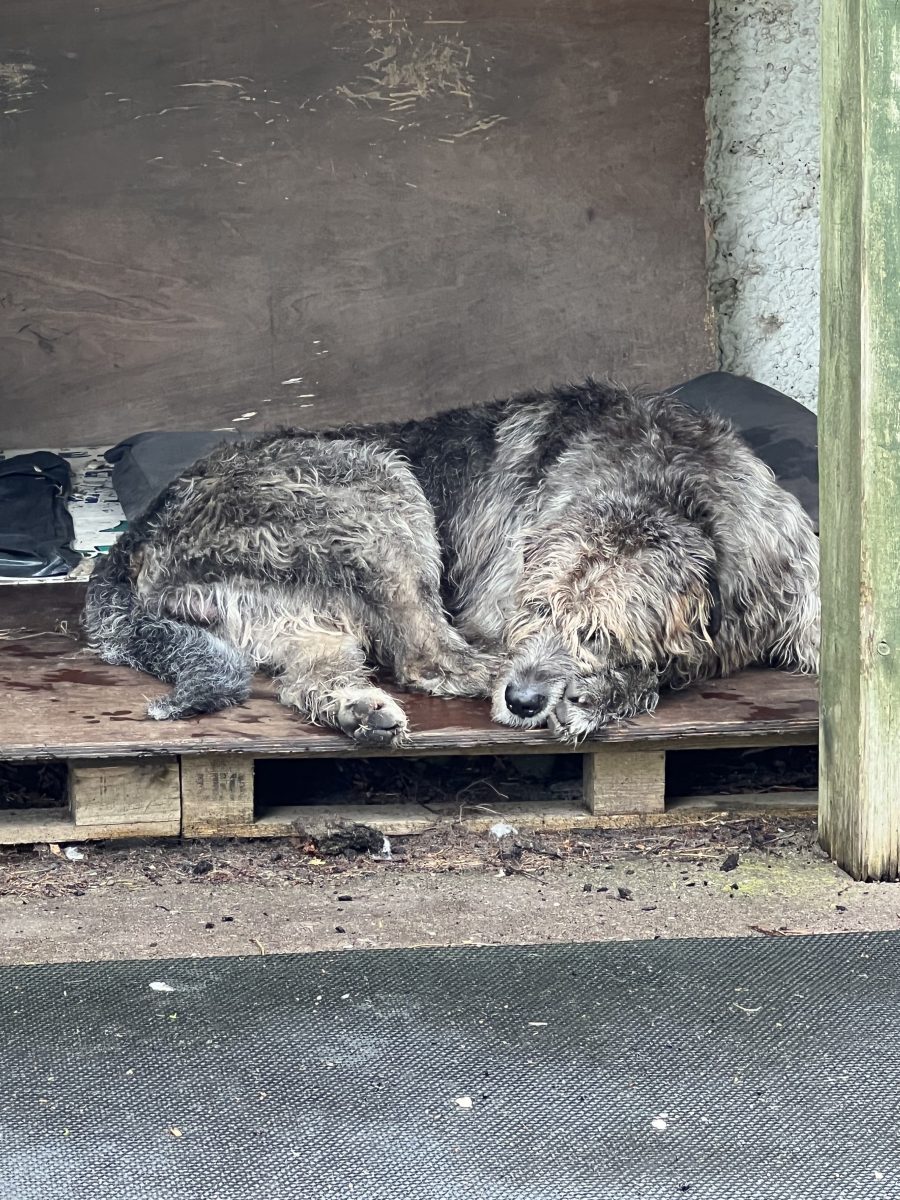
The Kerry Bog Village is an open-air museum. It recreates the life of a turf cutter. The cottage was thatched with river reeds.
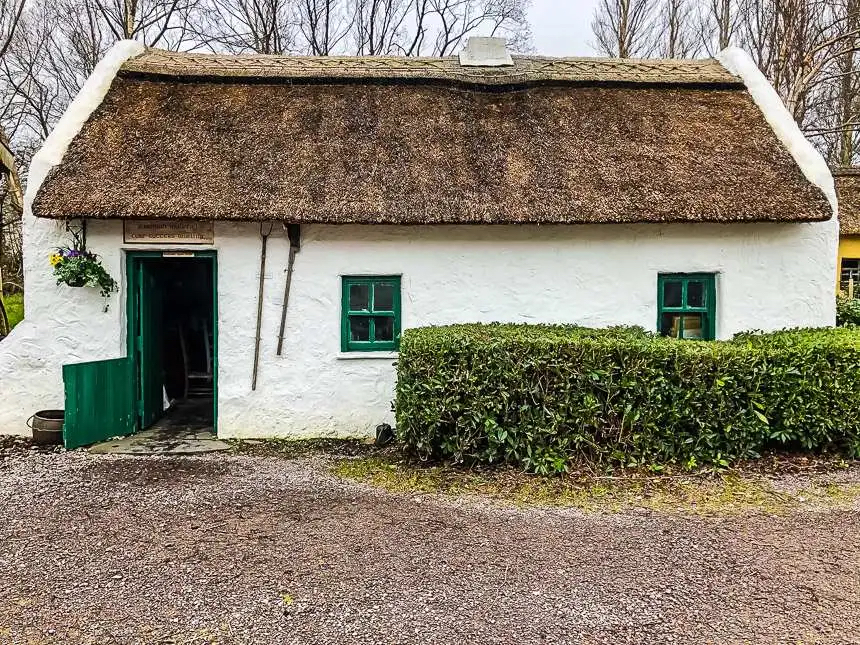
A 19th century Romany caravan were used by the “travelling people”. They would be pulled by a single cob or piebald horse.
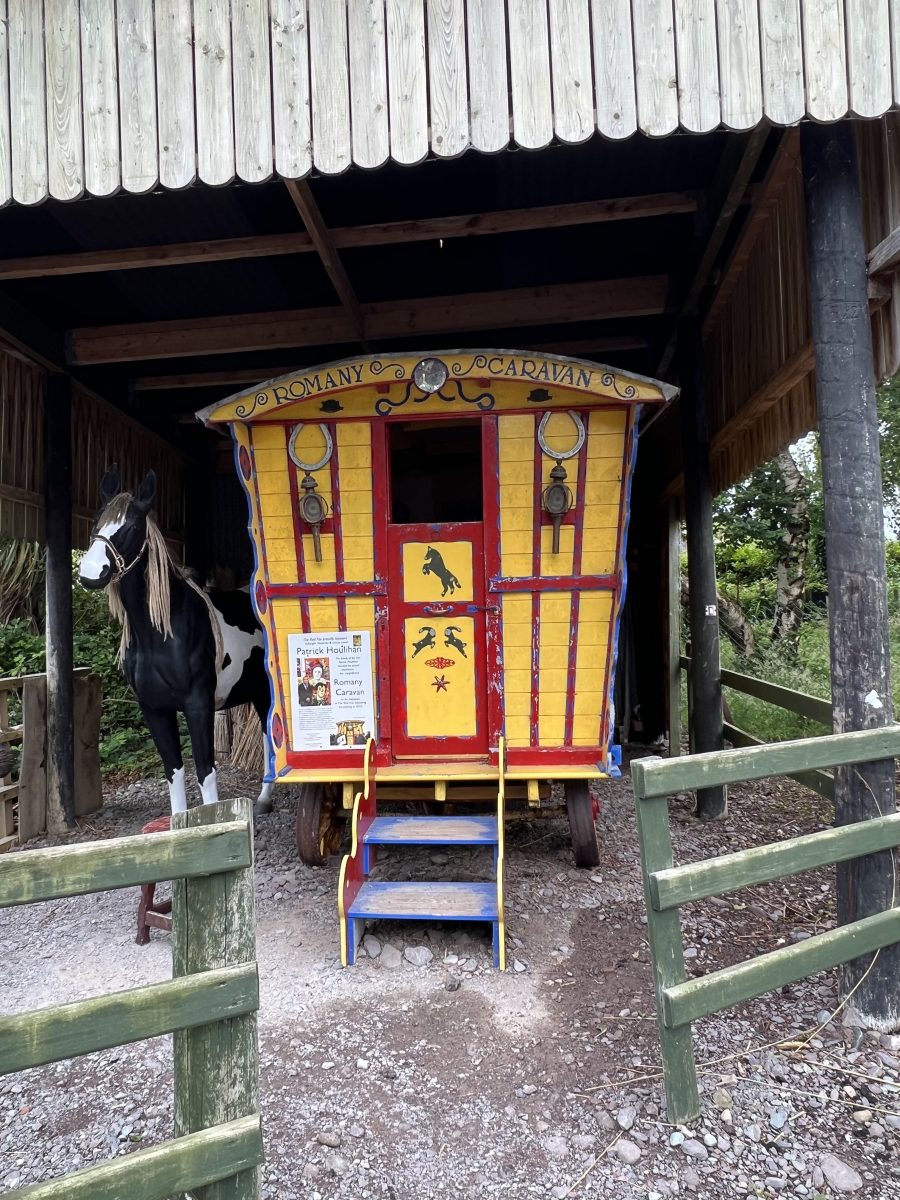
This was Jack Bell O’Sullivan’s forge. It was kept dark to assist in recognizing the colour of the horseshoes during the forging process.
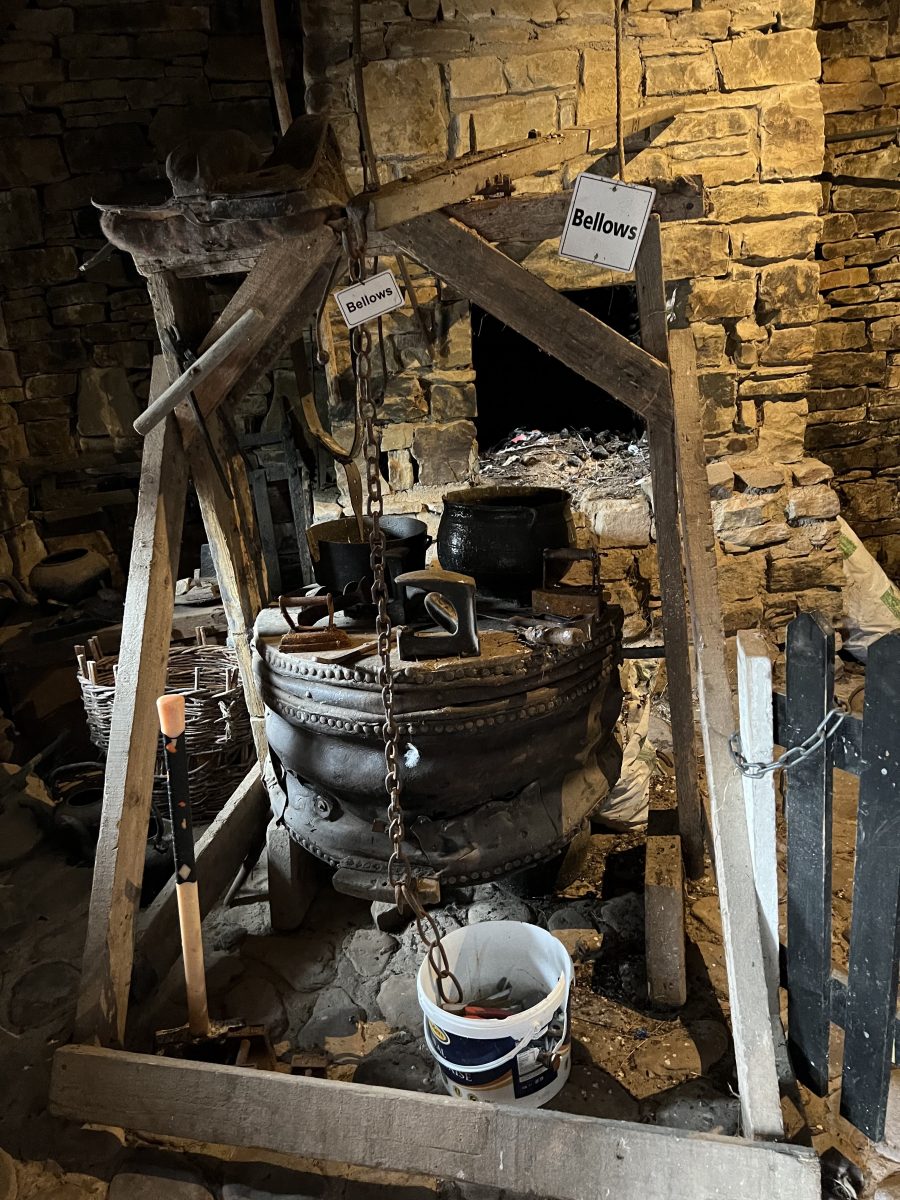
There were different examples of dwellings – the stable dwelling that housed animals on one side and the family on the other. The Labourer’s Cottage was very small. This is Denny Riordan’s place and he lived alone. The reason the window is so small is because of the window tax. It was seen as a luxury to have more light so windows were taxed by their size.
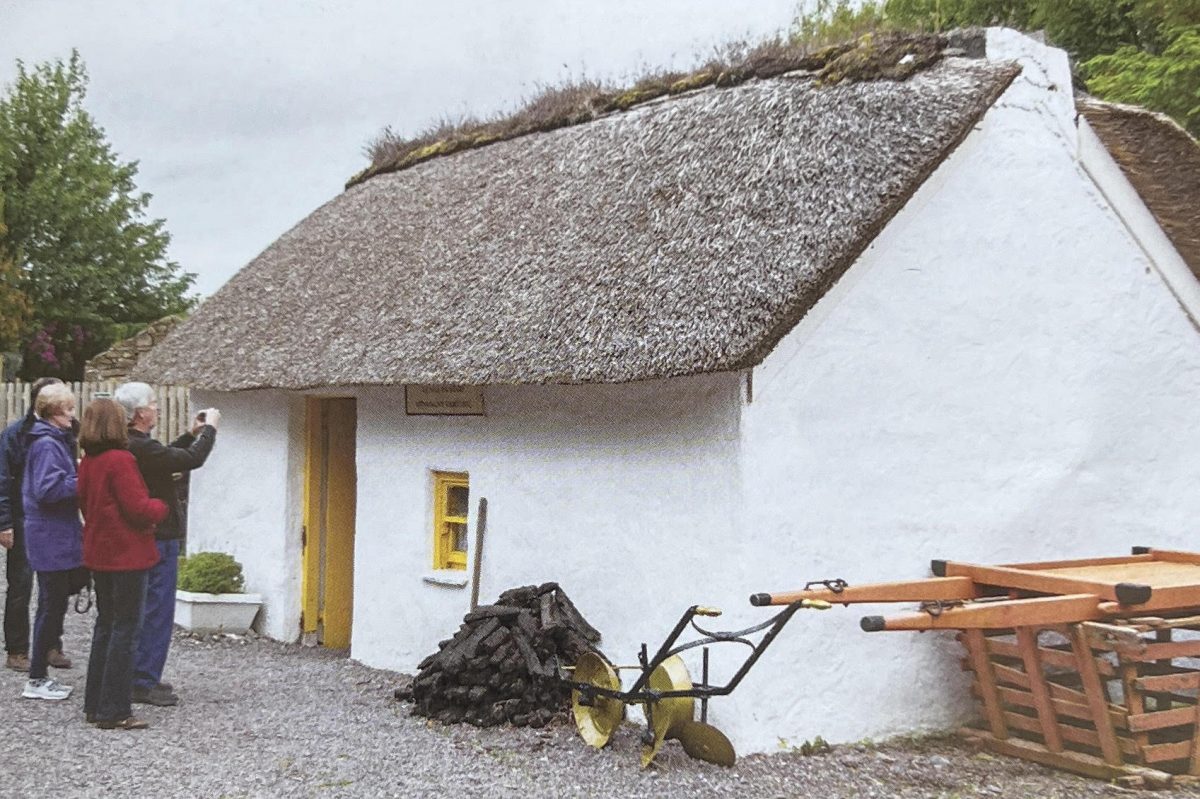
On the other hand Paddy Browne’s Thatcher Dwelling had an upstairs and more spacious rooms downstairs.
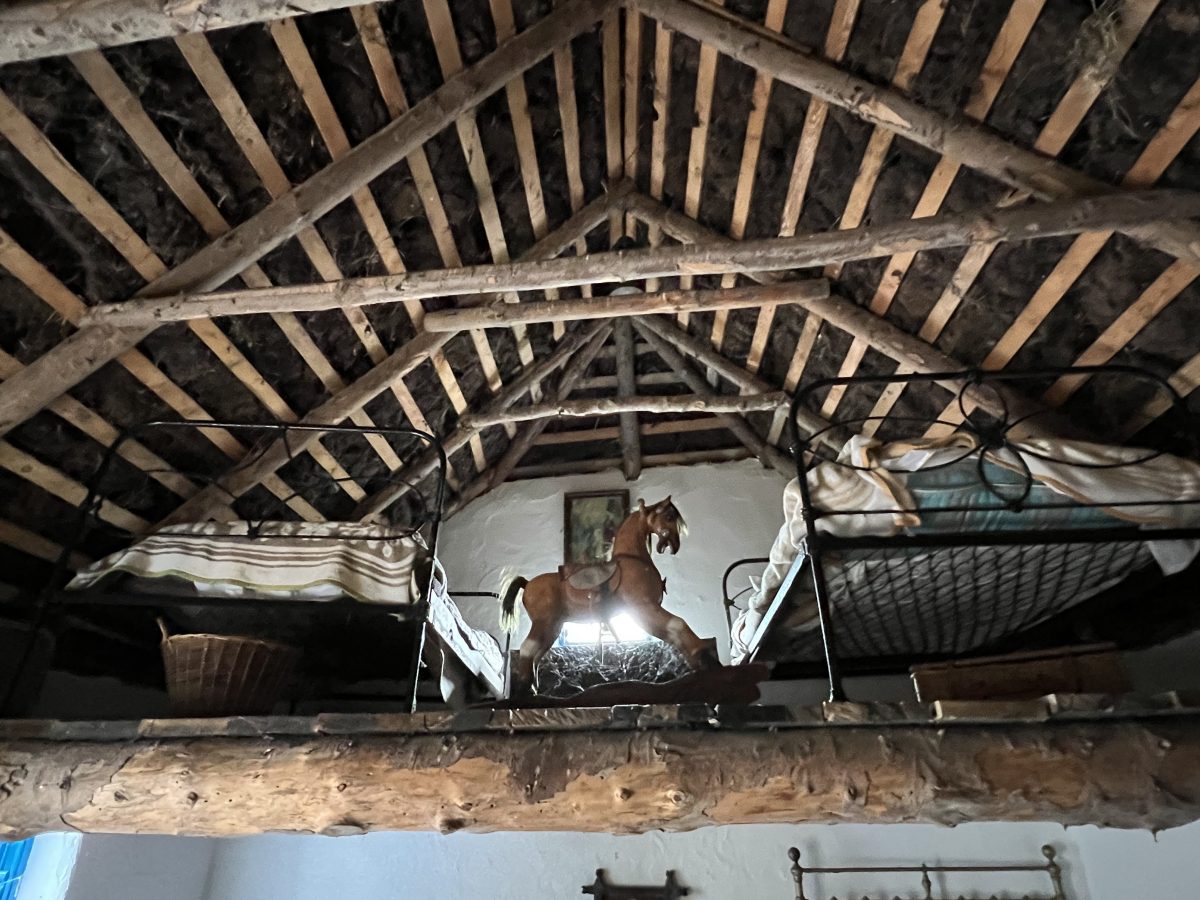
The bog blocks were cut from trenches and placed to dry in the sun. They consisted of partially rotted remains of dead plants. In Ireland there is a high rainfall and poor drainage. This accounts for plenty of bogs. The plant material means the peat burns slow and steady – not like a big bonfire of logs.
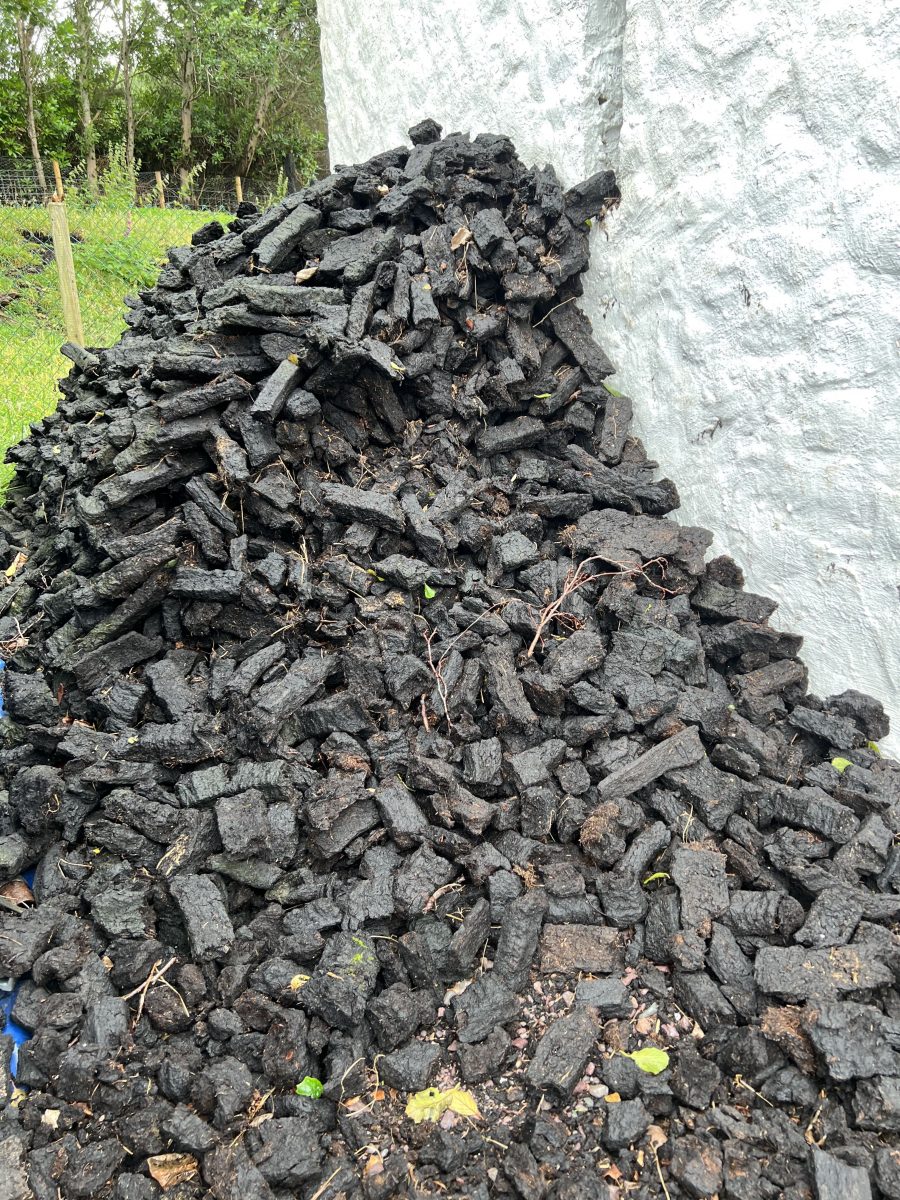
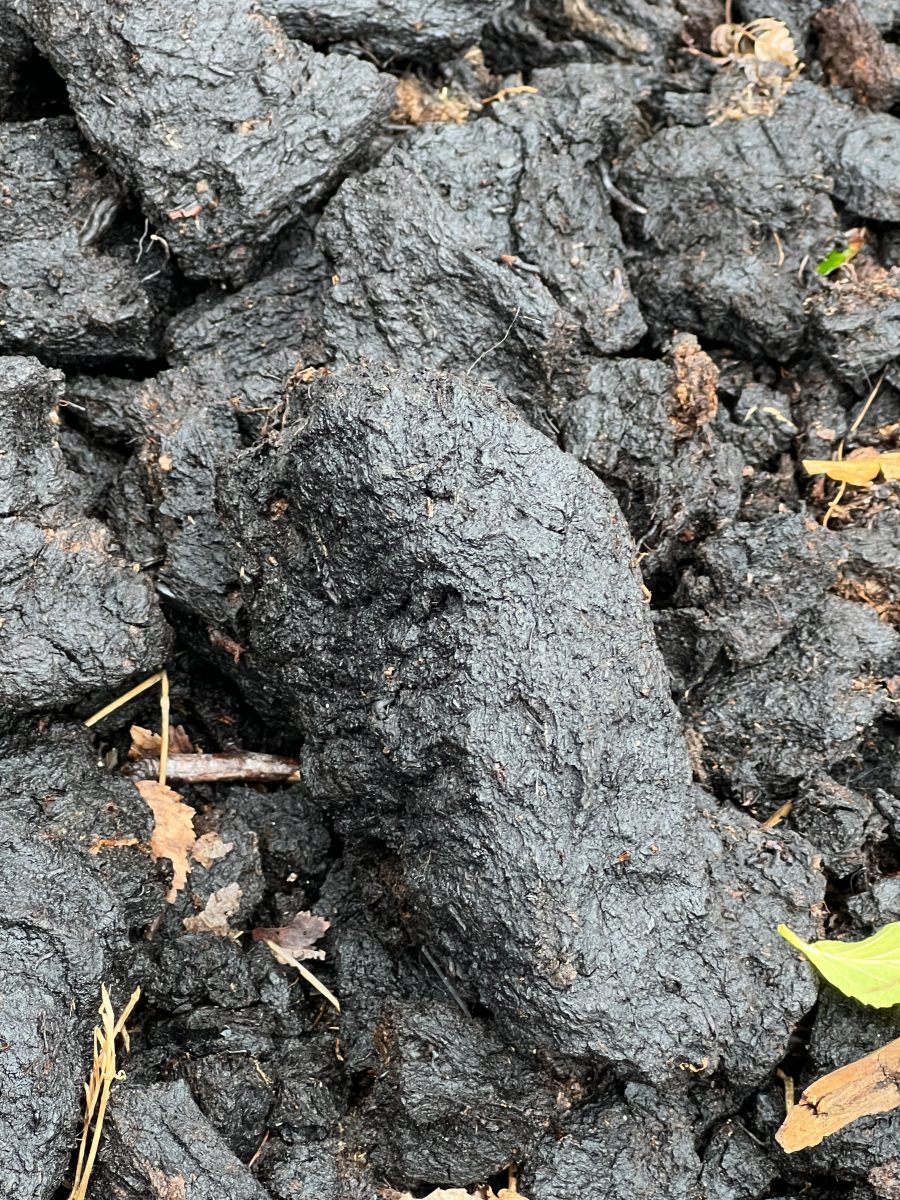
Bog trench

The Famine Pot. Introduced by the Government in 1847 under the Soup Kitchen Act. It was meant to prevent hunger by providing free soup. However, the soup lacked any vegetables or meat resulting in people developing scurvy. After it was introduced, over 2 million people took daily rations from the pot all over Ireland

The Kerry bog ponies were an ideal animal for the wetlands. It is native to Ireland. They would be used for general farm work, bringing home turf from the bog and transporting milk to the creamery. They were smaller than horses, eating less and taking up less space.

They came close to extinction in the 1980s but the breeding program at the Kerry Bog Pony Co-op has brought them back.

Next to the village is the Red Fox Inn. Admission to the village gave me a discount on an Irish coffee. The Inn was fairly packed, being on the Ring of Kerry but I found a quiet place to relax.

As we headed back out on the road, Ian pointed out the St. Brendan the Navigator monument. St. Brendan was a native of Kerry, born in 484. He set out on a 7 year voyage to find the Garden of Eden. It is said the part of the voyage had him cross the Atlantic and reach North America 1000 years before Columbus.

That was quite a morning. We were now headed to the Skellig Experience, which will be the next post.

WOW Larry…your photos are breath taking…especially those beautiful flowers! Learning a lot of history from you on this trip. Enjoying it all so much. Thx again, Ann
BEAUTIFUL, AS USUAL!! I noticed the 7th picture from the bottom looks like a sleeping horse. Did anyone else notice?